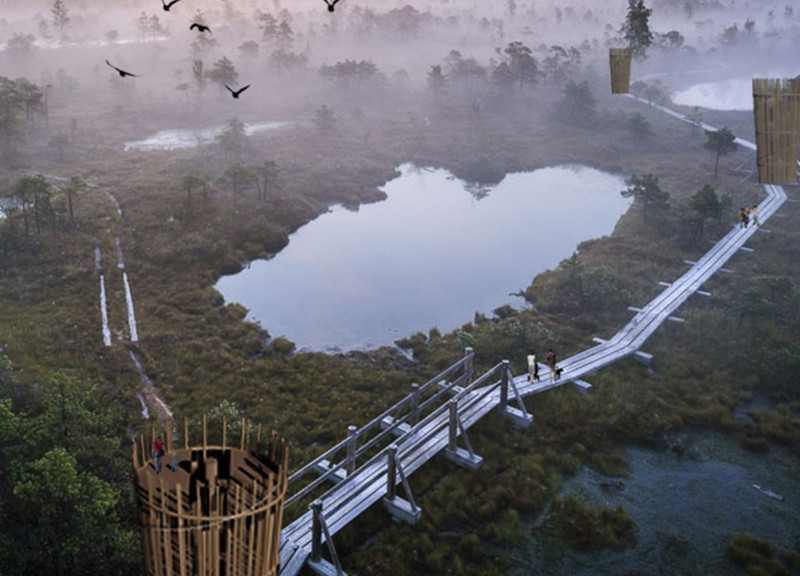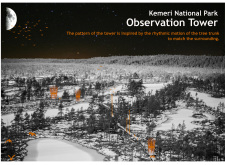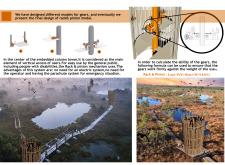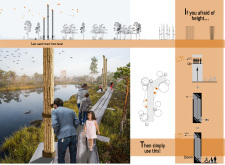5 key facts about this project
The Kemeri National Park Observation Tower is a structure positioned within the landscape of Kemeri National Park. Its purpose is to enhance the experience of visitors while they explore the park. The design features three observation platforms at different heights, providing varied views of the natural environment. The concept is inspired by the movement of tree trunks, allowing the tower to blend into the existing landscape and resonate with its surroundings.
Design Concept
The design of the observation tower uses ideas from nature, particularly the shapes and patterns found in trees. This connection to the organic forms of the forest helps the structure feel like a part of the landscape. By mimicking these natural elements, the tower encourages visitors to appreciate not just the views but also the deeper relationship between architecture and nature. It promotes a sense of calm and reflection in the beautiful park setting.
Accessibility Features
A major focus of the design is ensuring that all visitors can easily access the tower. An embedded column acts as the main element for vertical movement. The use of a rack and pinion mechanism enables smooth transportation between the different observation levels. This design feature is essential for people of all abilities, making the experience inclusive. Added safety measures, such as a parachute system for emergencies, help to reassure users while they enjoy their time in the tower.
Viewing Experience
The tower is designed to offer interactive viewing experiences. Visitors can choose from standard observation points or look into mirrored surfaces placed throughout the structure. These reflective surfaces create unique perspectives, allowing individuals to see the environment in new ways. The design invites exploration and discovery, enhancing the connection between the visitors and the natural surroundings.
Material Considerations
Wood has been chosen as a key material for the observation tower, highlighting an approach to sustainability. This selection ties the structure to the park's ecosystem and minimizes environmental impact. The natural qualities of wood integrate well with the tower's design, supporting the visual connection to the forest. The material not only adds to the aesthetic value but also echoes the organic inspiration behind the entire project.
The observation tower stands as a distinct feature in Kemeri National Park. Its design reflects careful thought about both functionality and respect for the environment. Visitors can enjoy the beauty of the park while engaging with a structure that feels both familiar and connected to the natural world.






















































